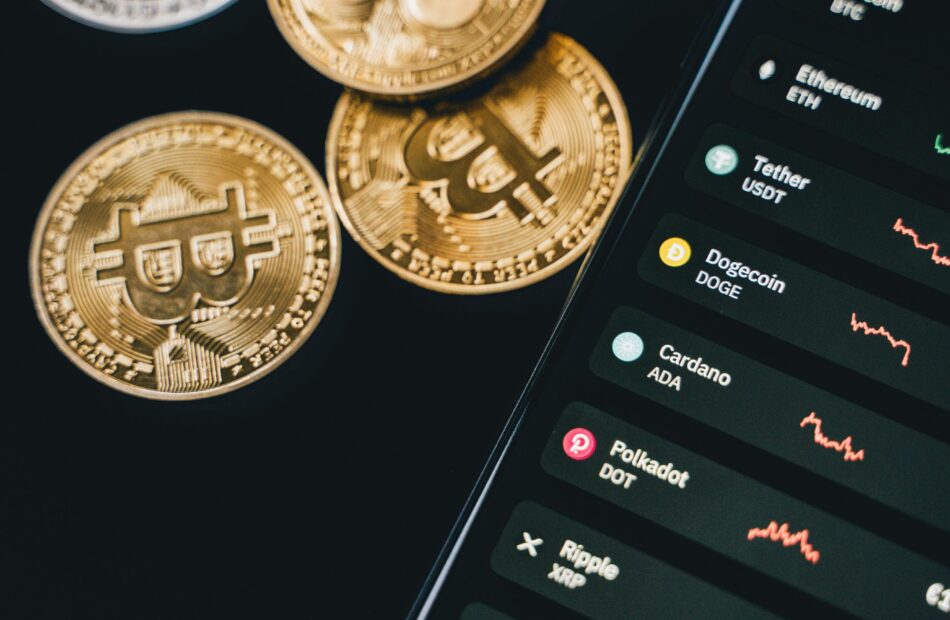SEC delays staking decision for Grayscale ETH ETFs
The United States Securities and Exchange Commission (SEC) has delayed a decision on whether to approve Ether staking in two Grayscale funds. The decision on Grayscale Ethereum Trust ETF and Grayscale Ethereum Mini Trust ETF has been postponed until June 1, according to an April 14 announcement from the SEC. The deadline for a decision is the end of October.On Feb. 14, the New York Stock Exchange (NYSE) filed a proposed rule change on behalf of Grayscale that would permit investors in the company’s Ether (ETH) ETFs to stake their holdings. Staking is the process of locking up cryptocurrency in a wallet to support the operations and security of a blockchain network, offering stakers rewards in return. The feature is considered a potentially integral part of Ether ETFs, as it could generate yield to investors, increasing the attractiveness of the funds.SEC’s announcement of the delay. Source: SECAnnual yield on staked Ether is estimated at 2.4% on Coinbase, while on Kraken, another US-based exchange, it ranges from 2% to 7%. According to Sosovalue, Ether ETFs have had a cumulative net inflow of $2.28 billion since their launch in 2024. The race for staking on Ether ETFs includes other asset managers, including BlackRock’s 21Shares iShares Ethereum Trust. The company sought permission to offer staking services in February and is currently waiting for the agency approval. SEC approves options for multiple spot Ether ETFsDespite the delay on staking filings, the SEC is moving forward with regulatory requests surrounding crypto ETFs. On April 9, the agency approved options trading for multiple spot Ether ETFs, allowing the derivates feature on funds from BlackRock’, Bitwise and Grayscale’s ETFs. Options trading involves the right to buy and sell contracts that give the investors the right but not the obligation to buy an asset at a certain price. The approval broadens the funds utility for institutional investors.The efforts to expand the appeal of Ether ETFs reflect the lack of adoption in contrast with Bitcoin (BTC) ETFs launched in January 2024. While the Ether ETFs amassed a net cumulative inflow of $2.2 billion as of April 11, Bitcoin funds flows topped $35.4 billion according to Sosovalue.Ether has also had a rough time during this bull market compared to other assets like XRP (XRP) and Solana (SOL). The asset’s 52-week high of $4,112 did not surpass its November 2021 peak all-time-high value of $4,866. The token is trading below the $2,000 mark on April 14.Magazine: What are native rollups? Full guide to Ethereum’s latest innovation
Price analysis 4/14: SPX, DXY, BTC, ETH, XRP, BNB, SOL, DOGE, ADA, LEO
Bitcoin (BTC) bulls are trying to start the week on a positive note by pushing the price above $85,000. Michael Saylor’s Strategy has used the recent dip to buy 3,459 Bitcoin for $285.5 million at an average price of $82,618. That boosts the total holding of the firm to 531,644 Bitcoin purchased at an average price of $67,556.However, not everyone is bullish in the near term. Several institutional investors seem to have trimmed their holdings. CoinShares reported on April 14 that digital asset exchange-traded products (ETPs) witnessed $795 million in outflows last week. The $7.2 billion in outflows since February have reversed nearly all year-to-date inflows, now at just $165 million.Daily cryptocurrency market performance. Source: Coin360Although Bitcoin seems to have bottomed out in the short term, a roaring bull market rally is unlikely to start in a hurry. The tariff headlines and the outcome of the tariff talks between the United States and other countries could dictate the price action.Could Bitcoin build upon the recovery, pulling altcoins higher? Let’s analyze the charts to find out.S&P 500 Index price analysisThe S&P 500 Index (SPX) witnessed a hugely volatile week, but a positive sign is that lower levels attracted solid buying by the bulls.SPX daily chart. Source: Cointelegraph/TradingViewAfter the massive volatility of the past few days, the index could enter a quieter phase. Sellers are likely to sell the rallies near 5,500, while the bulls are expected to buy the dips to the 5,119 support. That signals a possible range-bound action between 5,500 and 5,119 for some time.The next trending move is expected to begin after buyers push the price above 5,500 or sink below 4,950. If the 5,500 level gets taken out, the index could surge to 5,800.US Dollar Index price analysisThe US Dollar Index (DXY) has been in a freefall since turning down from the 20-day exponential moving average (102.81) on April 10.DXY daily chart. Source: Cointelegraph/TradingViewBuyers defended the 99.57 level on a closing basis on April 11, but the bears renewed their selling on April 14. If the price closes below 99.57, the index could tumble to 97.50 and, after that, to 95. The longer the price remains below 99.57, the greater the risk of starting a new downtrend.If buyers want to prevent a downward move, they will have to swiftly push the price back above 99.57. That could start a recovery to 101.Bitcoin price analysisBitcoin broke above the resistance line on April 12, and the bulls successfully held the retest of the breakout level on April 13.BTC/USDT daily chart. Source: Cointelegraph/TradingViewThe 20-day EMA ($82,979) has flattened out, and the RSI is near the midpoint, suggesting that the selling pressure is reducing. The BTC/USDT pair could climb to $89,000, which is likely to act as a stiff resistance. If the price turns down sharply from $89,000 and breaks below the 20-day EMA, it will indicate a range formation. The pair may oscillate between $89,000 and $73,777 for a few days.If sellers want to trap the aggressive bulls and retain control, they will have to quickly pull the price back below the 20-day EMA. If they do that, the pair may descend to $78,500 and subsequently to the vital support at $73,777.Ether price analysisEther (ETH) is facing selling at the 20-day EMA ($1,722), as seen from the long wick on the April 14 candlestick.ETH/USDT daily chart. Source: Cointelegraph/TradingViewIf the price plummets below $1,546, the ETH/USDT pair could retest the $1,368 support. This is a crucial level for the bulls to defend because a break below $1,368 could start the next leg of the downtrend toward $1,150.Conversely, if buyers propel the price above the 20-day EMA, it signals that the bears are losing their grip. There is resistance at the 50-day SMA ($1,955), but it is likely to be crossed. The pair may then ascend to the solid resistance at $2,111.XRP price analysisXRP (XRP) turned down from the 50-day SMA ($2.24) on April 13, indicating that sellers are active at higher levels.XRP/USDT daily chart. Source: Cointelegraph/TradingViewThe 20-day EMA ($2.10) has flattened out, and the RSI is near the midpoint, indicating a balance between supply and demand. A break below $2 will tilt the advantage in favor of the bears. The XRP/USDT pair could drop to $1.72 and later to $1.61.Buyers will gain the upper hand if they push and maintain the price above the 50-day SMA. If they can pull it off, the pair could rally to the resistance line. Sellers are expected to aggressively defend the resistance line because a break above it signals a potential trend change.BNB price analysisBNB (BNB) is facing resistance at the downtrend line, but a minor positive is that the bulls have not ceded much ground to the bears. BNB/USDT daily chart. Source: Cointelegraph/TradingViewThat increases the likelihood of a break above the downtrend line. If that happens, the BNB/USDT pair could ascend to $645. Sellers will try to guard the $645 level, but it is likely to be crossed.This positive view will be invalidated in the near term if the price turns down sharply from the downtrend line and breaks below $566. That could keep the pair stuck inside the triangle for a while longer.Solana price analysisSellers are trying to defend the 50-day SMA ($130) in Solana (SOL), but the bulls have kept up the pressure.SOL/USDT daily chart. Source: Cointelegraph/TradingViewIf the price closes above the 50-day SMA, the SOL/USDT pair could rise to the $147 to $153 resistance zone. Sellers are expected to vigorously defend this zone, but if the bulls prevail, the pair could surge to $180.The first support on the downside is the 20-day EMA ($123). A bounce off the 20-day EMA will keep the positive momentum intact, while a break below it could sink the pair to $110 and eventually to $95.Related: Solana rallies 20% against Ethereum, but is $300 SOL price within reach?Dogecoin price analysisBuyers are trying to start a recovery in Dogecoin (DOGE) but are expected to face stiff resistance from the bears at the moving averages.DOGE/USDT daily chart. Source: Cointelegraph/TradingViewIf the price turns down from the moving averages, the bears will again attempt to sink the DOGE/USDT pair below $0.14. If they manage to do that, the selling could accelerate, and the pair may slump to $0.10.Contrarily, if buyers propel the price above the moving averages, the pair could rally to $0.20. This is an important near-term level to watch out for because a break above it will complete a double-bottom pattern. The pair could then climb toward the pattern target of $0.26.Cardano price analysisBuyers are struggling to push Cardano (ADA) above the 20-day EMA ($0.65), indicating that demand dries up at higher levels.ADA/USDT daily chart. Source: Cointelegraph/TradingViewIf the price turns down from the 20-day EMA, the next support on the downside is $0.58 and then $0.50. Buyers are expected to fiercely defend the $0.50 level because a break below it could sink the ADA/USDT pair to $0.40.On the upside, buyers will have to drive and maintain the price above the 50-day SMA ($0.71) to signal that the downtrend could be over. That could propel the pair to $0.83 and subsequently to $1.03.UNUS SED LEO price analysisBuyers are trying to push UNUS SED LEO (LEO) above the 20-day EMA ($9.39), but the bears are posing a substantial challenge.LEO/USD daily chart. Source: Cointelegraph/TradingViewThe flattening 20-day EMA and the RSI near the midpoint suggest a balance between supply and demand. That could keep the LEO/USD pair stuck between $9.90 and $8.79 for a few days.The next trending move could begin on a break above $9.90 or below $8.79. If buyers kick the price above $9.90, the pair will complete a bullish ascending triangle pattern. This bullish setup has a target objective of $12.04.On the downside, a break below $8.70 could signal the start of a deeper correction toward $8.30.This article does not contain investment advice or recommendations. Every investment and trading move involves risk, and readers should conduct their own research when making a decision.
Bitcoin traders target $90K as apparent tariff exemptions ease US Treasury yields
The 2-year and 10-year US Treasury yields dipped on Monday, April 14, after Bitcoin (BTC) closed its best weekly performance since the second week of January. Bitcoin gained 6.79% over the past week, but are enough factors aligned to support continued price upside? The 10-year treasury yield declined by 8.2 basis points to 4.40% during the New York trading session, while the 2-year treasury saw an 8 basis point slip to 3.88%. The drop in yields occurred on the back of possible tariff exemptions on smartphones, computers, and semiconductors, which were introduced to give US companies time to move production domestically. However, US President Donald Trump emphasized these exemptions were temporary in nature.US 10-year treasury bond yields chart. Source: Cointelegraph/TradingViewThe tariff exemptions announced on April 12 came at the end of a bullish week for Bitcoin. After forming new yearly lows at $74,500, BTC price jumped 15% to $86,100 between April 9-13. Easing US treasury yields could be a double-edged sword for Bitcoin. Lower yields reduce the appeal for fixed-income assets, improving capital injection into risk-on assets like BTC. Still, the uncertainty of “temporary exemptions” and the ongoing trade war with China keeps Bitcoin susceptible to further price volatility. As an “inflation hedge,” Bitcoin continues to draw mixed opinions, but recent uncertainty over trade policies increases inflation fears, improving BTC’s store of value narrative. Yet, recent US inflation data suggested a cooling trend, as the Consumer Price Index (CPI) for March 2025 indicated a year-over-year inflation rate of 2.4%, down from 2.8% in February, marking the lowest since February 2023, which could be indirectly bearish for Bitcoin in the short term.Related: Trade war vs record M2 money supply: 5 things to know in Bitcoin this weekBitcoin price hurdles present at $88K to $90KTrading resource Material Indicators noted that Bitcoin retained a bullish position above its 50-weekly moving average and quarterly open at $82,500. A strong weekly close implied a higher possibility that Bitcoin is less likely to re-visit its previous weekly lows anytime soon. The analysis added, “Bitcoin bulls now face strong technical and liquidity-based resistance between the trend line and the 200-day MA. Expecting “Spoofy” to move asks at $88k and $92k before they get filled.”Likewise, Alphractal founder Joao Wedson suggested that Bitcoin may be nearing a bullish reversal, as the Perpetual-Spot Gap on Binance—a key indicator tracking the price difference between Bitcoin’s perpetual futures and spot markets, has been narrowing since late 2024.Bitcoin Perpetual-spot price gap chart. Source: X.comIn a recent X post, Wedson highlighted that this shrinking gap, currently negative, signals fading bearish sentiment, with historical trends from 2020–2021 and 2024 showing that a positive gap often leads to a Bitcoin rally. Wedson noted that a flip to a positive gap could indicate returning buyer momentum. However, he cautioned that such negative gaps persisted during the 2022–2023 bear market.Related: Michael Saylor’s Strategy buys $285M Bitcoin amid market uncertaintyThis article does not contain investment advice or recommendations. Every investment and trading move involves risk, and readers should conduct their own research when making a decision.
Mantra CEO says OM token recovery ‘primary concern’ but in early stages
Mantra CEO John Mullin addressed key concerns from the community following the sharp decline in the OM token during an Ask Me Anything (AMA) session hosted by Cointelegraph on April 14.Mullin reassured users that Mantra and its partners are actively working to support the recovery of the Mantra (OM) token, though he noted that details around token buybacks and potential burns are still being developed.“We’re still in the early stages of putting together this plan for potential buyback of tokens,” the CEO said, adding that the OM token recovery is Mantra’s “preeminent and primary concern right now.”At the time of writing, OM traded at $0.73, slightly higher than its post-collapse low of $0.52 recorded on April 13 at around 7:30 pm UTC, according to data from CoinGecko.“Baseless allegations”In addition to denying reports claiming that key Mantra investors dumped the OM token pre-crash, the Mantra CEO also denied allegations that the Mantra team controls 90% of the token’s supply.“I think it’s baseless. We posted a community transparency report last week, and it shows all the different wallets,” Mullin said, highlighting the “two sides” of Mantra’s tokenomics.Source: Cointelegraph“You have the Ethereum side and you have the mainnet side,” Mullin noted, adding the Ethereum-based token is hard capped and has been around since August 2020. “The biggest holder of OM on exchange is Binance,” Mullin continued, referring the public to Etherscan records.The top eight addresses of OM holdings. Source: EtherscanHowever, the top OM wallet is currently held by crypto exchange OKX, which controls 14% of the circulating supply, or roughly 130 million tokens.What’s next for Mantra’s $109-million MEF fund?Mullin also addressed the Mantra Ecosystem Fund (MEF), a $109-million fund launched on April 7 in collaboration with its major strategic investors, including Laser Digital and Shorooq.Other investors in the fund also included Brevan Howard Digital, Valor Capital, Three Point Capital, Amber Group, Manifold, UoB Venture, Damac, Fuse, LVNA Capital, Forte and others.Related: Mantra bounces 200% after OM price crash but poses LUNA-like ‘big scandal’ riskAccording to Mullin, the fund does not solely consist of Mantra’s OM token and has “dollar commitments and dollar contributions.”Investors in Mantra’s $109-million fund. Source: Mantra“We’ll continue to invest and support the ecosystem as part of this recovery plan,” the CEO stated.End of the staking program on BinanceIn the AMA, the Mantra CEO also said that a 38-million-OM transaction to the Binance cold wallet on April 14 is related to a staking program on Binance.“It was actually Binance,” Mullin said, adding that Binance had OM tokens on its exchange that it was using as a staking program.Source: Onchain Lens“So, they just returned them because the staking program ended,” he said.Mullin also emphasized that many of the transactions that caught the community’s reactions post-crash involved collaterals by an unnamed exchange.“Effectively, those tokens were being used as collateral on an exchange. Then, the exchange decided that it was not the position they wanted to maintain anymore, for whatever reason,” Mullin said, adding:“So, what happened was basically the positions were taken over by the exchange that took the collateral and started selling, which caused a cascade of sell pressure and forced more liquidations.”Mullin said Mantra remains committed to addressing the situation as transparently as possible.“We’re not running from anything,” he said, adding that the incident was a “very unfortunate situation.”Magazine: Bitcoin eyes $100K by June, Shaq to settle NFT lawsuit, and more: Hodler’s Digest, April 6–12
Circle’s EURC grows as trade war pushes euro higher — Analyst
The market cap of Circle’s Euro Coin (EURC), a euro-pegged stablecoin, is growing quickly as the ongoing trade war pushes the US dollar price lower. “In recent weeks, interest in the euro has grown tremendously” and “this interest has not escaped the Circle EURC stablecoin,” Obchakevich Research founder Alex Obchakevich wrote in a recent X post.The euro has risen by 2.2%, reaching its highest price since February 2022 at its current price of $1.13.Obchakevich said that amid this happening, decentralized finance (DeFi) protocol Aave saw €2.3 million of Euro Coin inflows in April alone. He further highlighted that EURC’s capitalization is growing at a rapid pace.Source: Obchakevich’sCoinMarketCap data shows EURC’s market cap rose from under $84 million at the end of 2024 to more than $198 million as of mid-April — a 136% increase year to date.Related: ECB exec renews push for digital euro to counter US stablecoin growthThe euro grows amid an increasingly harsh trade warThe euro’s recent rally comes as the US dollar weakens on the back of escalating trade tensions. Since Dec. 31, 2024, the dollar has dropped from 0.97 euro to 0.88 euro, a 9.3% decline against the euro.The US and European Union “are likely to reach an agreement on a trade deal that will stabilize the euro at $1.11 to the dollar,” Obchakevich said. Still, he expects the Euro Coin to keep growing:“EURC will continue to grow through integration with various payment systems and blockchains.“The analyst said that after launching on Ethereum, Euro Coin was also deployed on Avalanche, Base, Stellar, Sonic and Solana, leading to a growing supply. He shared his outlook on future market developments:“I predict EURC to grow to 400 million euros by the end of this year. This will be further impacted by MiCa regulatory support and economic challenges.“Related: Digital euro to be ‘most private electronic payment option’MiCA works in Circle’s favorEuro Coin and USDC (USDC) issuer Circle is reaping the rewards of its regulatory-friendly strategy. The firm’s products are the top euro and US dollar-pegged stablecoins that comply with the European Union’s Markets in Crypto-Assets (MiCA) regulation.The current stablecoin market leader is Tether, with its USDt (USDT) stablecoin currently having a market cap of $144 billion according to CoinMarketCap data. This is significantly higher than leading stablecoin USDC’s $60 billion market cap.Still, many expect this gap to shrink as the USDt keeps being pushed from the European Union’s market due to a lack of MiCA compliance. This trend culminated in the world’s leading crypto exchange, Binance, delisting USDt for its European Economic Area-based users to comply with the rules in March.Magazine: How crypto laws are changing across the world in 2025
Solana rallies 20% against Ethereum, but is $300 SOL price within reach?
Solana’s SOL has rallied more than 20% against Ether (ETH) over the last seven days, and a trader is eyeing a potential breakout to $300, which would mark new all-time highs.SOL/ETH ratio hits highest weekly closeThe SOL/ETH ratio, which reflects the value of Solana in Ether, rose to 0.080 on April 13, marking the highest weekly close ever, according to data from Cointelegraph Markets Pro and Binance.The SOL/ETH trading pair has been forming higher highs on the daily chart since April 4, suggesting an uptrend is underway.SOL/ETH daily chart. Source: Cointelegraph/TradingViewThe SOL/ETH pair gains follow a bullish week for Solana, which has increased by 35% over the last seven days, against a 13% increase in ETH price over the same timeframe. “The SOL/ETH chart has just flashed a sign of strength,” said pseudonymous trader Bitcoinsensus in an April 14 post on X, adding:“Solana has closed its highest weekly close against Ethereum in history, reflecting that we could see continued outperformance of the Solana Ecosystem.”Previously, the SOL/ETH ratio reached as high as 0.093 in January during a rally in crypto prices fueled by US President Donald Trump’s inauguration, which saw the price briefly notch a new all-time high of $295.Can Solana price reach $300 in April?Popular crypto trader BitBull shared a CME futures chart on X that suggests SOL price could break out toward the $300 mark next.The trader cited Ether’s price consolidation around $2,000 on the CME chart before breaking out to all-time highs in 2021. “SOL is now showing a similar structure on the CME futures chart” as it trades with the $120 and $130 range, BitBull pointed out, adding that SOL could follow a similar breakout to all-time highs above $300.“Just like Ethereum’s run in 2021, Solana is setting up for a massive move in 2025.”SOL CME Futures chart vs. ETH CME futures chart. Source: BitBullRelated: Fartcoin rallies 104% in a week — Will Solana (SOL) price catch up?Chart technicals aside, several onchain metrics suggest that SOL’s path to new all-time highs faces significant hurdles.For example, Solana’s network fees dropped more than 97% to $898,235 million on April 14, compared to $35.5 million on Jan. 20.Solana network daily transaction fees, USD. Source: DefiLlamaThe decline in Solana fees aligns with reduced trading activity on Raydium, Pump.fun, and Orca. At the same time, fees have stayed unchanged since mid-February on other decentralized applications, such as Jito, Moonshot.money, Meteora and Photon. Similarly, the daily DEX volumes on Solana plummeted to $2.17 billion on April 14, 93% below its Jan. 20 peak of $35.9 billion. Solana weekly DEX volumes, USD. Source: DefiLlamaTherefore, SOL’s journey toward new all-time highs will be a tough challenge unless there is a notable rise in network activity. SOL’s price is up 3% during the past 24 hours to $133 and 54.5% below its Jan. 19 all-time record. This article does not contain investment advice or recommendations. Every investment and trading move involves risk, and readers should conduct their own research when making a decision.
Bybit denies $1.4M listing fee, school promo accusations on X
Crypto exchange Bybit has denied claims that it charges $1.4 million to list a token on its platform, following allegations made by a social media user with over 100,000 followers.On April 14, X user “silverfang88” accused the exchange of demanding millions from projects in listing fees. The user also alleged that Bybit used key opinion leaders (KOLs) to silence students who were given trial contracts through the platform’s Campus Ambassador program.Bybit CEO Ben Zhou denied the allegations, asking the social media user to provide evidence backing the claims. Zhou added that the crypto space has been chaotic because of rumors posted without evidence. Source: Ben ZhouBybit denies $1.4-million listing fee accusationIn a statement sent to Cointelegraph, a Bybit representative clarified the requirements for listing on the crypto exchange. According to Bybit, the exchange requires three things from projects: a promotion budget, a security deposit and an evaluation process. “Projects are expected to allocate promotional funds for user engagement activities, though legal constraints prevent exchanges from holding tokens directly,” the representative told Cointelegraph. Bybit said it asks for a deposit of $200,000–$300,000 in stablecoins to ensure promotional goals are met. Penalties may apply if the targets are not reached.Apart from the promotional funds, the exchange said its listing process includes form submissions, internal voting, research and a listing review meeting. The representative told Cointelegraph: “Evaluations focus on fundamentals and risk controls, including onchain data, address authenticity, use cases, user distribution, project value, token valuation, value capture mechanisms and team credentials.”Related: Bybit integrates Avalon through CeFi to DeFi bridge for Bitcoin yieldUser claims Bybit provided trial contracts to studentsIn addition to the listing fee allegations, the X user claimed that Bybit had provided trial contracts to students under its 2024 Campus Ambassador program and used KOLs to suppress complaints.The account shared a Campus Ambassador program run by the trading platform in 2024 and said the issue was related to the program. Zhou responded to those claims as well, again calling for proof. “Please show evidence if Bybit has done anything wrong,” he wrote on X.The exchange has not responded directly to the specific claims related to its ambassador program at the time of publication.Magazine: Memecoin degeneracy is funding groundbreaking anti-aging research
Bots are killing social media, but decentralization can save it
Opinion by: Leroy Hofer, co-founder and CEO at Teneo ProtocolAs the old wisdom goes, nobody knows you’re a dog on the internet. Often enough, nobody knows if you’re a bot either, to the point where the dead internet theory sometimes feels disturbingly tangible. Bot traffic share hit its highest level in 2024, up 2% on the year before, according to the 2024 Imperva Bad Bot Report. The bot pandemic is ravaging the Web. People are taking notice — people like Chanpeng Zhao, for example, who recently urged Elon Musk to ban bots on X. He’s not the only one in the Web3 community to call for such measures, and rightly so. From artificially inflating engagement metrics to orchestrating scams, bots are quickly drowning out real human interactions — and it’s at a time when our lives drift more and more into the online world. While platform owners continue to roll out AI-driven moderation and paywalls to curb bot activity, these solutions fail to address the root problem. Moderation tools also regularly operate with minimal transparency — incorrectly flagging legitimate content without users knowing why.Users also often have to surrender personal data to prove they are not bots, raising privacy concerns and creating barriers to participation. More problems are being made, and a decentralized approach is the only viable path forward.If left to fester, the rise of bots will create repercussions that go way beyond social media. Companies pouring money into digital marketing will see their budgets wasted on fake engagement. It’s even possible to imagine a dirty trick where a rival would use bots to waste the competitor’s money by feeding them fake impressions — this already happens in the digital ad space.People are — and will continue to become — more suspicious of online interactions, making it harder for authentic creators and businesses to earn trust. The user experience also suffers. As automated noise drowns out meaningful discussions, users may eventually abandon social media for good. We need to deal with the bot problem for all these and other reasons — once and for good.The limits of centralized solutionsSocial media giants have been using centralized moderation strategies to tackle the bots issue for quite some time. AI-driven detection systems serve as the first line of defense. They’re far from perfect. Bots are getting smarter, often slipping through the cracks by mimicking human behavior and bypassing safeguards. On top of that, false positives can lead to unfair restrictions on genuine users. Oh, the mighty banhammer, a weapon from a more civilized age. Recent: CZ urges Elon Musk to ban bots on the X social media platformAnother common tactic is the implementation of paywalls, like X’s verification fees, which require users to pay for authentication. This method raises the financial hurdle for bot operators but also creates a two-tiered system that disadvantages users who can’t — or won’t — pay. Paywalls do little to deter well-funded bot farms that can easily overlook these costs. While these measures are well-meaning, they often miss the mark when balancing security with user accessibility.A decentralized solutionA decentralized model hands the reins back to the users and offers an alternative to having centralized entities decide what’s real and what’s not. Using blockchain-based decentralized identity (DID) and reputation systems, platforms can verify real users without compromising their privacy. Decentralized solutions reduce the need for unclear moderation policies and empower people to control their own digital reputations across different platforms.DID solutions enable users to verify their authenticity through cryptographic attestations, so intrusive Know Your Customer processes are unnecessary. Reputation-based systems can help to strengthen bot resistance by rewarding verified users with more social credibility while shrinking the impact of suspicious accounts. The real advantage here is that these systems operate transparently, preventing centralized authorities from imposing rules that may prioritize corporate interests over user rights.Fixing social media’s bot problem without breaking itThe bot problem isn’t just a hassle — it’s a fundamental threat to the integrity of social media. The challenge is finding a solution that gets rid of bots without getting rid of free speech and user control. Centralized solutions are failing. Even worse, centralized systems also introduce new problems under the guise of security. A decentralized, data-driven approach enables people to authenticate themselves on their own terms, making bot-driven manipulation much harder.We urgently need to move beyond the current system and push for decentralized solutions that protect users and bring authenticity back to social media. If social media is to be a space for genuine human interaction, it has to go decentralized before the bots make it useless.Opinion by: Leroy Hofer, co-founder and CEO at Teneo Protocol. This article is for general information purposes and is not intended to be and should not be taken as legal or investment advice. The views, thoughts, and opinions expressed here are the author’s alone and do not necessarily reflect or represent the views and opinions of Cointelegraph.








